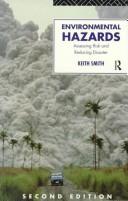| Listing 1 - 10 of 2224 | << page >> |
Sort by
|
Book
Year: 2017 Publisher: [Place of publication not identified] : International Monetary Fund,
Abstract | Keywords | Export | Availability | Bookmark
 Loading...
Loading...Choose an application
- Reference Manager
- EndNote
- RefWorks (Direct export to RefWorks)
The Rapid Credit Facility (RCF) and Rapid Financing Instrument (RFI) are valuable components of the disaster risk financing tool kit for Fund members, especially developing countries. They help to meet urgent balance of payments needs, and are designed to play a catalytic role in mobilizing other external financing. This paper develops proposals for a higher annual access limit under the RCF and RFI, building on a November 2016 staff paper on small states' resilience to natural disasters and climate change (IMF, 2016c). Directors generally supported the proposal in that paper to establish higher annual access limits of 60 percent of quota under the RCF and RFI for countries experiencing severe natural disaster-related damages. The focus of this paper is to specify the threshold of damage from a natural disaster that would allow members experiencing urgent balance of payments needs arising from such disasters to access emergency financing at the higher annual limit. In the November 2016 paper, staff proposed, among other things, the possibility of establishing a higher access limit under the RCF and RFI where the amount of damage reached the threshold of 30 percent of GDP. Most Directors regarded the proposed threshold of disaster damage as overly restrictive, and suggested lowering the threshold to 20 percent of GDP or lower, provided that this did not jeopardize the self-sustainability of the PRGT. For a range of future disaster outcomes, a damage threshold of 20 percent of GDP could increase projected annual average PRGT loan demand in the 1-5 percent range over the next decade, which should not pose significant risks to the robustness of PRGT self-sustainability. Cautious stewardship of PRGT resources argues against a lower disaster damage threshold, pending further experience with disaster trends and associated PRGT loan demand. This paper does not propose changes to the current cumulative access limits for the RCF and RFI. The cumulative access limits play an important role in the Fund's financing architecture, constraining the extent to which countries can access Fund resources without implementing a Fund-supported program with upper credit tranche (UCT) conditionality and associated policies in circumstances where such a program would be more appropriate. The Board will have the opportunity to review the cumulative access limits in the context.
Book
Year: 2015 Publisher: Paris : Agence française de développement,
Abstract | Keywords | Export | Availability | Bookmark
 Loading...
Loading...Choose an application
- Reference Manager
- EndNote
- RefWorks (Direct export to RefWorks)
L'énergie se situe au cœur de la politique économique de l'Indonésie fondée depuis Suharto (1966) sur la valorisation des ressources naturelles. Le pays dispose en effet de considérables ressources fossiles mais également d'un potentiel d'énergies renouvelables significatif. A ce titre, le solde positif de la balance commerciale énergétique a jusque très récemment constitué une contribution majeure aux besoins de financement du pays. L'exploitation de cette richesse énergétique pose toutefois plusieurs questions: "Dans quelle mesure la déplétion de ces actifs naturels donne-t-elle lieu à la création d'autres actifs nationaux, capital productif, financier et humain, susceptible d'assurer un effet de levier dans le développement économique du pays?" "Quelles sont les tendances d'évolution du mix énergétique et comment se traduisent-elles en termes de compétitivité des secteurs productifs de pouvoir d'achat des ménages et d'équilibre des comptes publics?" "De quelle manière les spécificités géographiques (archipel), ethniques (provinces séparatistes) et sociologiques (répartition des revenus) constituent-elles des déterminants de la stratégie énergétique nationale et des enjeux politiques associés?" C'est à l'aune de ces différents indicateurs que la capacité de l'économie indonésienne à faire face aux incertitudes croissantes de la nouvelle ère énergie-climat, amorcée avec le tournant du siècle, doit être examinée. Les enjeux énergétiques constitueront à n'en pas douter une des variables clé de la trajectoire de développement à venir.
Book
Year: 2022 Publisher: [Place of publication not identified] : International Monetary Fund,
Abstract | Keywords | Export | Availability | Bookmark
 Loading...
Loading...Choose an application
- Reference Manager
- EndNote
- RefWorks (Direct export to RefWorks)
Executive Directors welcomed the report of the Independent Evaluation Office (IEO) on IMF Engagement with Small Developing States (SDS) and appreciated its insights and recommendations. They welcomed the report's finding that the Fund has substantially stepped up its engagement with its SDS members over the past decade, and that SDS country officials generally considered Fund surveillance and capacity development (CD) activities of high quality and well-tailored to their needs.
Book
ISBN: 1498387403 Year: 2017 Publisher: [Place of publication not identified] : International Monetary Fund,
Abstract | Keywords | Export | Availability | Bookmark
 Loading...
Loading...Choose an application
- Reference Manager
- EndNote
- RefWorks (Direct export to RefWorks)
The Rapid Credit Facility (RCF) and Rapid Financing Instrument (RFI) are valuable components of the disaster risk financing tool kit for Fund members, especially developing countries. They help to meet urgent balance of payments needs, and are designed to play a catalytic role in mobilizing other external financing. This paper develops proposals for a higher annual access limit under the RCF and RFI, building on a November 2016 staff paper on small states' resilience to natural disasters and climate change (IMF, 2016c). Directors generally supported the proposal in that paper to establish higher annual access limits of 60 percent of quota under the RCF and RFI for countries experiencing severe natural disaster-related damages. The focus of this paper is to specify the threshold of damage from a natural disaster that would allow members experiencing urgent balance of payments needs arising from such disasters to access emergency financing at the higher annual limit. In the November 2016 paper, staff proposed, among other things, the possibility of establishing a higher access limit under the RCF and RFI where the amount of damage reached the threshold of 30 percent of GDP. Most Directors regarded the proposed threshold of disaster damage as overly restrictive, and suggested lowering the threshold to 20 percent of GDP or lower, provided that this did not jeopardize the self-sustainability of the PRGT. For a range of future disaster outcomes, a damage threshold of 20 percent of GDP could increase projected annual average PRGT loan demand in the 1-5 percent range over the next decade, which should not pose significant risks to the robustness of PRGT self-sustainability. Cautious stewardship of PRGT resources argues against a lower disaster damage threshold, pending further experience with disaster trends and associated PRGT loan demand. This paper does not propose changes to the current cumulative access limits for the RCF and RFI. The cumulative access limits play an important role in the Fund's financing architecture, constraining the extent to which countries can access Fund resources without implementing a Fund-supported program with upper credit tranche (UCT) conditionality and associated policies in circumstances where such a program would be more appropriate. The Board will have the opportunity to review the cumulative access limits in the context.
Multi
ISBN: 9789264298798 9264298797 Year: 2018 Publisher: Paris : OECD,
Abstract | Keywords | Export | Availability | Bookmark
 Loading...
Loading...Choose an application
- Reference Manager
- EndNote
- RefWorks (Direct export to RefWorks)
Disasters disrupt socio-economic activities and cause substantial damage. Yet, their full economic impact remains largely unknown, especially the cost of smaller disasters and indirect impacts such as those due to business disruptions. Similarly, little information exists on the total amount of public resources that countries devote to disaster risk management. Reliable, comprehensive and comparable data on the economic impact of disasters as well as on public spending on disaster management and risk prevention are essential for developing effective disaster risk management policies. This report provides an overview of countries' efforts to improve the quality and quantity of information on the costs of disasters.

ISBN: 0415122031 041512204X Year: 1996 Publisher: London ; New York : Routledge,
Abstract | Keywords | Export | Availability | Bookmark
 Loading...
Loading...Choose an application
- Reference Manager
- EndNote
- RefWorks (Direct export to RefWorks)
Natural disasters --- Catastrophes naturelles --- Natural disasters.
Book
ISBN: 9535110934 9535151401 Year: 2013 Publisher: IntechOpen
Abstract | Keywords | Export | Availability | Bookmark
 Loading...
Loading...Choose an application
- Reference Manager
- EndNote
- RefWorks (Direct export to RefWorks)
Approaches to Disaster Management regards critical disaster management issues. Ten original research reports by international scholars centered on disaster management are organized into three general areas of hazards and disaster management. The first section includes discussions of perspectives on vulnerability and on evolving approaches to mitigation. The second section highlights approaches to improve data use and information management in several distinct applications intended to promote prediction and communication of hazard. The third section regards the management of crises and post-event recovery in the private sector, in the design of urban space and among the victims of disaster. This volume contributes both conceptual and practical commentary to the disaster management literature.
Natural disasters. --- Natural calamities --- Disasters --- Natural disasters
Book
ISBN: 9535125168 953515074X 953512515X Year: 2016 Publisher: IntechOpen
Abstract | Keywords | Export | Availability | Bookmark
 Loading...
Loading...Choose an application
- Reference Manager
- EndNote
- RefWorks (Direct export to RefWorks)
Natural and environmental hazards research comprises a diverse set of subjects and methodologies and this book is no exception - offering the reader only a small glimpse into the physical and social processes that threaten human interests. Atmospheric Hazards-Case Studies in Modeling, Communication, and Societal Impacts explores atmospheric-based hazards through focused investigations ranging from a local to global perspective. Within this short compendium, the major scales of atmospheric motion are well represented with topics on microscale turbulent transport of pollutants, mesoscale events stemming from thunderstorm complexes, and synoptic scale extreme precipitation episodes. Chapters include discussions on modeling aspects for investigating hazards (pollution, regional climate models) and the forecasting and structure of high wind events (derechos), whereas others delve into hazard communication, preparedness, and social vulnerability issues (tornadoes, hurricanes, and lightning). Although the chapters are quite disparate upon first inspection, the topics are united through their interweaving of both the physical and societal mechanisms that create the atmospheric hazard and eventual disaster.
Natural disasters. --- Natural calamities --- Disasters --- Natural disasters

ISBN: 0521378893 052137295X Year: 1991 Publisher: Cambridge : Cambridge university press,
Abstract | Keywords | Export | Availability | Bookmark
 Loading...
Loading...Choose an application
- Reference Manager
- EndNote
- RefWorks (Direct export to RefWorks)
Natural disasters. --- Natural disasters --- Catastrophes naturelles
Book
Year: 2020 Publisher: Washington, D.C. : International Monetary Fund,
Abstract | Keywords | Export | Availability | Bookmark
 Loading...
Loading...Choose an application
- Reference Manager
- EndNote
- RefWorks (Direct export to RefWorks)
This Technical Note (TN) is a targeted review of cross-cutting themes building on the detailed assessment of the Insurance Core Principles (ICPs) conducted in 2015. The targeted review was chosen, in part, due to the performance of the U.S. insurance regulatory system in the 2015 detailed assessment where it was assessed that the U.S. observed 8 ICPs, largely observed 13 ICPs and partly observed 5 ICPs. The analysis relied on a targeted self-assessment against a subset of ICPs covering valuation and solvency, risk management, conduct, winding-up, corporate governance and enforcement, and the objectives, powers and responsibility of supervisors. The choice of subjects covered in this review is based on those aspects most significant to financial stability and a follow-up on key recommendations from the 2015 detailed assessment. The focus of the analysis has been on the state-based system of regulation and supervision, reflecting the existing institutional setup.
| Listing 1 - 10 of 2224 | << page >> |
Sort by
|

 Search
Search Feedback
Feedback About UniCat
About UniCat  Help
Help News
News